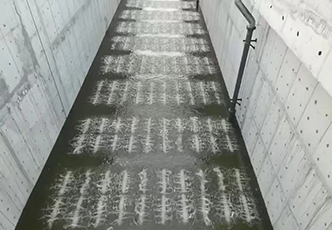 +86-15267462807
+86-15267462807
The major difference between aerobic and anaerobic wastewater treatment is the presence or absence of oxygen. Aerobic treatment requires oxygen to support the growth of aerobic bacteria that break down organic matter in the wastewater. Anaerobic treatment, on the other hand, occurs in the absence of oxygen, relying on anaerobic bacteria to break down organic matter.
This difference in oxygen availability leads to other differences between the two processes, such as the need for air circulation and energy consumption. Aerobic treatment requires a constant supply of oxygen and energy for aeration, mixing, and temperature control, while anaerobic treatment does not require aeration and has lower energy consumption. Anaerobic treatment also produces biogas, which can be used as a renewable energy source, while aerobic treatment does not.
More difference between aerobic and anaerobic wastewater treatments
Bacteria:
Aerobic treatment involves the use of aerobic bacteria, which require oxygen to survive and break down organic matter. In contrast, anaerobic treatment relies on anaerobic bacteria, which can break down organic matter in the absence of oxygen.
Air Circulation:
Aerobic treatment requires air circulation to supply oxygen to the aerobic bacteria, which can be achieved through mechanical aeration or natural aeration. In contrast, anaerobic treatment does not require air circulation since the process occurs in the absence of oxygen.
Production of Biogas:
Anaerobic treatment produces biogas, which is a mixture of methane and carbon dioxide that can be used as a renewable energy source. Aerobic treatment does not produce biogas.
Energy Efficiency:
Anaerobic treatment is more energy-efficient than aerobic treatment since it does not require a constant supply of oxygen. The energy required for anaerobic treatment is primarily for mixing the wastewater and maintaining the appropriate temperature. Aerobic treatment requires a constant supply of oxygen, which can be expensive to maintain.
Application:
Aerobic treatment is commonly used for the treatment of municipal wastewater and industrial wastewater with a high organic content. Anaerobic treatment is typically used for the treatment of high-strength wastewater, such as agricultural waste, food processing waste, and brewery waste.
Energy Consumption:
Anaerobic treatment has lower energy consumption than aerobic treatment since it does not require aeration. The energy consumption in anaerobic treatment is mainly for mixing the wastewater and maintaining the temperature. Aerobic treatment requires energy for aeration, mixing, and temperature control.
Post-treatment:
Aerobic treatment typically produces effluent with lower levels of nutrients, suspended solids, and organic matter compared to anaerobic treatment. Therefore, the post-treatment processes for aerobic effluent may focus more on disinfection and removal of remaining nutrients or trace contaminants. For example, chlorination or UV irradiation may be used for disinfection, while BNR or membrane filtration may be used for nutrient removal.
In contrast, effluent from anaerobic treatment may still contain high levels of organic matter and nutrients, as well as biogas. Therefore, post-treatment processes for anaerobic effluent may focus more on removal of remaining organic matter and nutrient removal, as well as utilization of biogas. For example, anaerobic effluent may be subjected to further treatment in an aerobic process to remove remaining organic matter and nutrients, or it may be used as a feedstock for biogas production through anaerobic digestion.
Technologies:
There are various technologies available for both aerobic and anaerobic treatment.
Aerobic Treatment Technologies: Activated Sludge System, Sequencing Batch Reactors, Membrane Bioreactors, Moving Bed Biofilm Reactors etc
Anaerobic Treatment Technologies: Anaerobic Digestion, Upflow Anaerobic Sludge Blanket (UASB) Reactors, Expanded Granular Sludge Bed (EGSB) Reactors, Anaerobic Membrane Bioreactors (AnMBR) etc